Changing appearance, or the evolutionary spurt of light universal cars
About 40000 Ford Ranger cars were delivered in 2005-2012 years of the Afghan army and police, which now have the largest fleet of commercial SUVs and pickups
A military lightweight universal vehicle or, in a military context, simply a lightweight universal vehicle (LUA) is a term used for the category of vehicles of the lightest class. As a rule, these are 4x4 configuration platforms, unarmored, with a short front and rear overhang, most often the human 4 passenger capacity, which were traditionally intended only for daily operation and general auxiliary tasks. However, over the past decade, the LUA segment has undergone significant evolutionary changes and continues to evolve.
The causes of this evolutionary spurt are determined by the increasing tendency of transition to asymmetric hostilities. In an asymmetric space, LUA tasks cannot be directly compared with their tasks in more traditional military scenarios, but you can still find a lot in common, there are many tasks for a class of vehicles that accommodate 2-9 passengers or have enough space to accommodate the main operational control equipment or other systems.
But the main change in the unarmored LUA segment is that unprotected platforms are rarely suitable for asymmetric space. As a consequence, the unsuitability of unarmored vehicles for asymmetric tasks has changed the way they are used in a more traditional war. As a result, in both scenarios, now universal cars need higher level protection to perform most tasks. As a result, most models that previously could have been classified as LUA are excluded.
The parks of traditional unarmoured LUA are now complemented by light-protected platforms, which sometimes act as a necessary means for conducting current operations, and sometimes - a partial replacement. The more expeditionary the doctrine of any individual operator is, the greater the share of protected machines and the less unprotected.
The purchase price of an unarmored LUA - at least those that can usually be seen in the armed forces of the first or second echelon - is on average about 70 thousand dollars. An armored equivalent with a minimum acceptable level of protection (STANAG 2 Level) will cost from 350 thousand to a million dollars. For armored platforms, the costs of full service life will also increase. Thus, at best, an armored LUA costs five times as much as an unarmored one and therefore, from a financial point of view, the replacement of parks becomes a costly undertaking.
However, one of the solutions could be the purchase of ready-made civilian off-road vehicles and light-duty trucks (pick-ups), followed by acceptance for supply to perform universal tasks. This may fragment the park and provoke an increase in operating costs, but in some cases wholesale prices may be lower than 30 thousand dollars and therefore this option becomes attractive if short-term savings are at the forefront.
The number of civilian platforms adopted by the military as traditional LUAs is decreasing, although the Mercedes-Benz G-Class will remain in demand for some time.
Traditional lua
For many years already, as a supplement to the LUA, many armies have successfully exploited — often in the form of short-term leasing — a relatively small number of civilian pickups / SUVs, mainly to meet the needs of home garrisons, the tasks of militarized and peacekeeping structures. Some of the less well-equipped armed forces and many irregular formations around the world for reasons of cost and purchasing exploit similar types of machines for tasks that more powerful armies might consider tactical.
For armed first and second echelon vultures, military LUA is traditionally divided into two general categories: specialized military platforms and commercial platforms adapted for military tasks.
Interestingly, the LUA military list is short. It includes EQ2050 from Dong Feng and its modifications. Sherpa Light from Renault, Ajban from NIMR, VAMTAC from URO and HMMWV from AM General (platform created category). Also worth noting is the lightweight Marrua car of the Brazilian company Agrale weighing 3500 kg, which can be compared to a Jeep.
All platforms, armored in accordance with at least the second level of security of the NATO standard STANAG 4569, are of interest to the armed forces developed in tactical terms. The tendency of their development is clearly seen in the example of the NIMR car. When production began about 10 years ago, orders were initially divided approximately equally between armored and unarmored configurations, but at the moment 90 percent of all manufactured vehicles are armored. It is noteworthy that in this category, the maximum gross weight currently stands at almost 11000 kg (in the case of Sherpa Light).
The list of commercial decisions adapted by the military under the LUA is much longer, although it is becoming shorter in Europe and North America. The utilitarian elements that traditionally made some commercial projects attractive to military users quickly become blurred for several reasons: changes in legislation, cheaper production processes and a change in consumer preferences. Typical commercial platforms in this category are Jeep Wrangler, Land Rover Defender and Mercedes-Benz G-Class.
The original Willys Jeep was a military product, but since 1945, civilian Jeep versions (CJ model) became available. The Jeep CJ version was produced the following 40 years and the subsequent platform versions became the basis of numerous military jeeps, including the M38 / M38A1, M606, M701, Kia KM410 / 420, Mahindra CL / MM and Mitsubishi J series.
Jeep became part of Chrysler (currently Fiat Chrysler LLC) in 1987, and in the same year, the Wrangler brand was introduced to the YJ model. Chrysler, with the exception of the Egyptian joint venture established in 1977, and the small-unit assembly in Israel, showed minimal interest in the military part of the business. Small quantities of commercial Wrangler were purchased for some military and related tasks, but until the Jeep J2008 became available in 8, which caused genuine interest in the military.
Based on the commercial model Wrangler JK, but with increased power and conforming to military specifications, the J8 variant occupies an intermediate position when civilian design forms the basis of military design / refinement. In order to market the J8, Chrysler has identified two main dealers: the British Jankel and the Gibraltar Africa Automotive Distribution Services. The production of the Wrangler JK is ending this year, but it has been confirmed that the militarized model JL will soon appear.
From 1960 to 1970, Land Rover manufactured two paramilitary platforms: Lightweight and Forward Control 101. However, the Land Rover civilian model has become a real military bestseller. Over the years of 67 production, which began in the 1948 year, it has been modernized more than once, reaching the peak of its popularity in the Land Rover Defender version. Production of this brand was halted in January 2016.
Officially, Defender production was completed in anticipation of changes in EU exhaust gas standards, but an industry source cited other reasons, including Defender as the main process of manufacturing, which is labor-intensive. The new Defender was promised by the owner of the Land Rover brand, the Indian company Tata Motors, but this car may be less attractive for the military, as according to some sources, it will have a bearing body (not a frame chassis), which is more suitable for everyday civilian use.
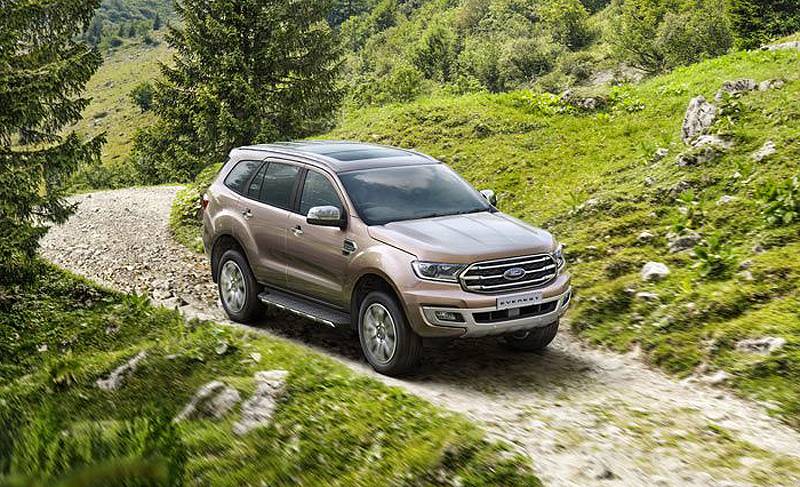
Singapore received a Ford Everest 870 as a partial replacement for the Land Rover fleet set in the 80s. The second-generation Ford Everest is based on the first-generation Ford Ranger (2006-2011), which itself is essentially a compact Mazda BT-50 pickup.
Mercedes-Benz has decided to continue marketing its 39-year-old G-Class model, despite the fact that its manufacturing process is even more labor intensive than the Defender manufacturing process.
The military-preferred utility vehicle of the 461 G-Class Series remains in production. The visually similar civilian model 463 G-Class is replaced by what Mercedes-Benz calls the “model with an updated look,” although the new version of the 463 retained only five common parts with the previous 463. However, Mercedes-Benz believes that one of the strengths of the G-Class products - the old 461, the new 463 and even the Light Armored Patrol Vehicle 5.4 based on the G-Class - is that they will all be assembled on the same production line. .
The car Jeep Wrangler with time in appearance and design became, perhaps, more and more civil, while Defender and G-Class remain much closer to their utilitarian roots, both inside and outside. On such machines, it is relatively easy to implement more “military-oriented” improvements, for example, electrical compatibility 24 volts, fitness for radio communications, masking lighting, suitability for winter conditions and the passage of deep fords.
Other civilian platforms previously adopted by the armed forces as LUA are no longer produced, including the Romanian ARO series, the Polish DZT Honker, the Indian Maruti Gypsy, Pinzgauer and the Spanish Santana PS-10.
It is also worth mentioning the Russian off-road utility vehicle UAZ 469 and its derivatives, for example, the Chinese BJ212 from Beijing Automobile Works and other models. Production of the UAZ 469, intended for the Warsaw Pact Armed Forces, was launched in the 1972 year 10 years after development. Deliveries of upgraded versions to the Russian army continued until the 2011 year. Production was halted briefly in the 2014-2015 year, but civilian options are again available in the market.
The Chinese car BJ212 and its subsequent versions were reportedly copied from the 469 UAZ, although the latest Chinese platforms a la Jeep, BJ2022 and BJ80, developed by Daimler Chrysler and BJC, a joint venture, were able to break away from the Russian roots. For example, the BJ80 model is based on the platform of the previous generation Jeep Cherokee, but its body resembles the G-Class body.
In the LUA segment there is also a choice of military-style platforms, which are based on serial civilian platforms. Examples include the first generation lightweight tactical vehicle ALTV from ASMAT, the Japanese Hummer-like Kohkidohsha and the Light Tactical Vehicle (LTV) of the Korean company Kia.
The first generation ALTV is based on the Nissan D40 platform, which is also the base for the second generation Nissan Navara / Frontier models. Nissan's one- or two-row cab, plus a reinforced chassis with a reinforced chassis, preserved and added a specially designed flat hood and cargo area. The Japanese Kohkidohsha and the Korean Kia LTV differ in military-type hulls, but appear to be based on the chassis and suspension of the Toyota Mega Cruiser and Kia Mohave SUVs.
The IVECO 40.15 car, based on the first-generation IVECO Daily van, went into production in the middle of the 80's under the designation 40.10. Despite the modest payload of the 1500 kg and the total weight of the 4300 kg, the 40.10 was originally classified as a light truck and placed between the Land Rover light cars and the standard 4XXNNXX four-ton trucks.
Production of the 40.15 model continues, but IVECO intends to find a replacement for it. In 2016, she began producing the M70.20 WM, using the cab and some of the undercarriage components from the Daily's sixth-generation van, but installing it on a specially designed ladder-type frame. With a payload capacity of up to 4000 kg, the M70.20 WM model is more likely a light truck than a LUA.
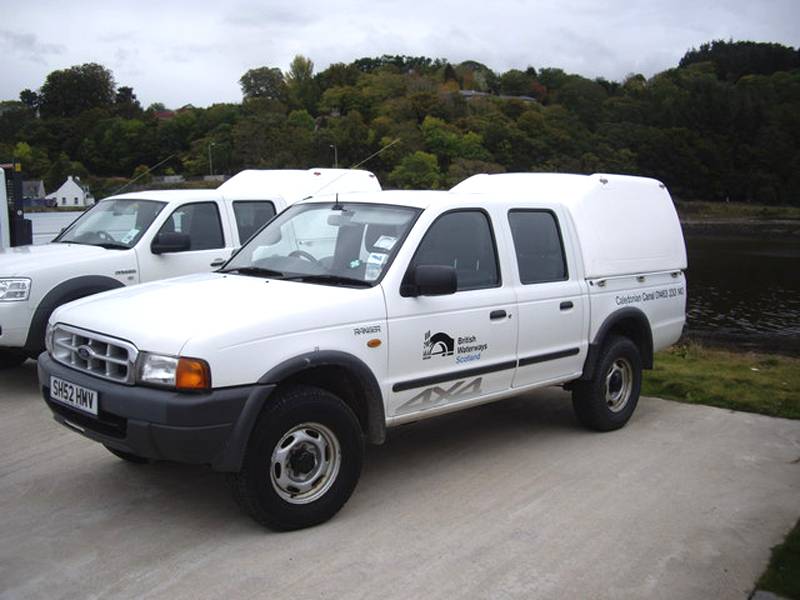
The commercial Ford Ranger is operated by the British military. From a technical point of view, the fifth-generation Ranger (1998-2006) was nothing more than a Mazda B-series car produced under the Ford brand.
SUVs and pickups
There is a wide selection of SUVs and 4xXNNMX configuration pickups that are suitable for military use. However, some of the high-end luxury models or the new class of “crossovers”, which often lack all-wheel drive, are unlikely to meet the needs of the military.
All typical pickups usually have a frame chassis, while most SUVs have a carrying body. Bearing body has a lower strength and durability, and therefore the majority of SUVs are only suitable for basic or less demanding tasks.
In general, American SUVs and pickups are larger than their European counterparts, although in most cases the actual interior space or load capacity is not proportional to the total weight and size. The North American vehicles of all three major brands, Fiat Chrysler, Ford and General Motors, can often be seen in the military service of the armed forces of many countries of the world, but in most cases these vehicles did not replace the LUA tasks and do not perform them directly.
Outside of American influence, there are Toyota Land Cruiser and Hilux cars; These two models are usually used for military, paramilitary, or similar tasks. But recent purchases of vehicles from this class by the armed forces have shown that the most popular platform is the Ford Ranger.
Price is a key factor determining off-road and pickup purchases for lightweight universal tasks. Even without taking into account the quantity discount, the cost of a Mitsubishi L200 / Triton or a Toyota Hilux car in civilian performance can be an attractive 30 in thousands of dollars when leaving the assembly line. They can perform various routine tasks, replacing much more efficient types of LUA, whose capabilities are sometimes redundant.
When needs begin to determine the range of tasks that the car must perform, then compliance problems for SUVs or pickups come to the fore. The exact fit to the needs is solved with the help of upgrades and improvements. But they are too detrimental for any automated line, so all modifications should be made not by the head manufacturer of the final product, but, as a rule, by the dealer or agent. It is also rare to see a manufacturer’s application with a commercial platform for military requirements, since the potential revenue from a military product will be small compared with simpler and more voluminous sales of civilian products.
Basic modifications, for example, camouflage paint, racks for weapons and protective grilles are relatively easy to perform. But then you have to invest and pay a lot of money (starting from 20 thousand dollars) for strengthening the design and increasing the total weight to the desired 3500 kg and more, installing fasteners and tow hooks of the military standard, updating the electrical system for 24 volts and more power generation, adding camouflage lighting and perhaps for installing a kit to overcome water obstacles of greater depth or replace plastic bumpers with something more durable.
Minimal changes for Mercedes-Benz G-Glass and Land Rover over the past few decades have been largely determined by law, while Toyota, Mitsubishi and all comparable platforms (with the notable exception of the Land Cruiser 70 Series) have largely changed in favor of appearance. simplified production and customer needs. The passenger compartment, for example, was relatively box-like and cramped in the first SUVs and pickups and could have made it difficult for soldiers in full uniforms to land and disembark, but later became more streamlined.
With regard to service life and durability, the automakers are increasingly designing their products under the desired service life, creating, in fact, disposable machines. Recent evidence suggests that the average age of vehicles in the “developed” armed forces is estimated to be about 11 years. Where SUVs and pickups were taken to supply the armed forces, comparable in equipment to the NATO armies, the service life is usually 5-10 years, which is slightly less than previously expected for more universal platforms.
Even if the base SUV or pickup was seriously modified and upgraded to meet operating requirements, its usefulness may be in question and something like the Jeep J8, Mercedes-Benz G-Class 461 or even AM General HMMWV potentially becomes a more cost-effective option ( many of these cars in many armed forces are often older than their driver).
For the G-Class, the selling price of the military version of the W461 may be close to 85 thousands of dollars, but the utilitarian, essentially hand-built G-Class car with manual windows and minimalist interiors comes out of the factory with steel bumpers, NATO standard fasteners, towing hooks, camouflage light, electrical system on 24 volts, kits for working in winter conditions and overcoming the ford of the NATO standard. Gross weight is 3560 kg, but can be increased to 5400 kg; There are three wheelbase options and even the 6x6 configuration (on request).
VLTP-NP is a modification of the Station Wagon variant of the light tactical car ASMAT, the base platform for which is the Ford Everest model
Selection process
Military roles for the LUA and pickups should be carefully selected. The US Army’s commercial utility truck CUCV (Commercial Utility Cargo Vehicle) program in this sense is an instructive history. The army was looking for a commercial vehicle for operation in favorable conditions, where more expensive tactical vehicles, such as the HMMWV, would most likely be redundant. The General Motors K model was chosen and almost a thousand 71 cars (including sales abroad) were eventually delivered.
However, the CUCV serial platform, taken, in essence, without any modifications could not withstand the difficult conditions of military service. As a result, it was replaced by an HMMWV armored car, which was originally supposed to be supplemented.
The armed forces of many countries, including France, India, the Netherlands, New Zealand and Singapore, making purchases of commercial SUVs and pickups in recent years, hope not to repeat mistakes like the CUCV.
The Netherlands is in the process of replacing its LUA fleet, consisting mainly of the G-Class model. In December 2013, the Department of Defense signed a contract with Рon Holdings BV for Volkswagen Amarok pickups on 1667, deliveries of which were completed in 2016. The cars were bought mainly for domestic operation and any global deployment would be limited to humanitarian operations, so there is no need for protection or for an engine capable of running on dirty high-sulfur or kerosene fuel of military standards.
Modifications for military purposes were minimal and limited to painting in matte green, steel hubs with all-terrain tires, camouflage lighting, attachment points for military radio stations and weapon racks, and fastening rings for air and sea transport.
Machines have an expected life of 10 years; The contract provides for a significant amount of service (the company is responsible for all services) and technical support. Service and support will be carried out throughout the country at the offices designated by Volkswagen. The estimated mileage of new cars over the entire life cycle is estimated at 200000 km, and those that run more than 20000 km per year will be replaced by cars with lower mileage.
Each car is assigned a guaranteed maximum idle time per year (excluding accidental damage), for exceeding which penalties will be imposed (in which form it is not clear). Over time, the Amarok fleet will be complemented by modified cars, allocated as needed. For example, in the 2016-2017 years, the Dutch Ministry of Defense received another 350 Amarok car as part of a proposal for a design change; the suspension has been strengthened to slightly increase the payload.
In order to replace the remaining G-Class cars, the Netherlands recently began negotiations on the demand of the 12 kN in the light car segment. More 900 machines are needed and, although a single platform is desirable, a separate platform can be allocated to a less demanding requirement for a military police vehicle / aerodrome security.
An important feature of the 12 kN requirement, which can limit the number of offers, is the need for 220 hinged armor kits with 2 protection levels for hard and soft top options and pickups; in this case, the total mass may be about 8000 kg. A separate contract will be concluded for the maintenance of machines. They have defined a minimum service life of 10 years and two five-year options, which gives a predictable service life of at least 20 years.
The French Defense Property Administration took a slightly different approach to replacing the LUA fleet, which currently consists mainly of Peugeot P4 models. In the 2002-2012 years, this park has been updated by purchasing a Land Rover Defender 2100 order. The car Р4 is, in fact, made in France, the model G-Class with a French engine and gearbox. Deliveries of these machines began in 1983 year.
India chose Tata Safari Storme, preferring its models Mahindra Scorpio, with the aim of replacing the parks of “jeep-like” cars Maruti Gypsy and Mahindra MM
The replacement of the P4 fleet of vehicles is carried out mainly under the VLTP (Trafficule Le Transport de Transport Polyvalent) program, launched in 2012. In 2015, an order for a partial replacement of P4 vehicles for Ford Ranger pickups for operation throughout the country was placed on the VLTT program (the Higules Legers Tactique Tout-Terrain).
In April 2016 of the year it was decided to move the VLTP program to 2019 for the year and after submitting the applications in December 2016 of the year the order for the production of VLTP-NP (Non Protege - Unprotected) was issued to Renault Trucks Defense (RTD). Under the contract, ASMAT (part RTD) will supply XLUMX trucks VLTP-NP within four years. The initial order for 3700 machines will be completed by the middle of 1000. The very first 2019 machines were delivered in January of this year. The contract also provides for “maintenance during the entire life cycle”. The technical support package guarantees 96% availability levels throughout France throughout 14 years. Modification and technical support is 95% of the contract value, and this is about 60 million dollars.
VLTP-NP is a modification of the second generation ALTV lightweight tactical vehicle Station Wagon, the base platform for which is the Ford Everest - LUA with frame chassis, developed from the current Ford Ranger model. Second generation ATLV pickup truck variants are based on the Ford Ranger. The Everest civilian vehicle has a gross weight of 3100 kg and a maximum payload of about 750 kg.
Modifications by ASMAT of the Ford base platform include: weapon racks, bottom protection, steel hubs with all-terrain tires, a reinforced suspension that increased the total weight to 3500 kg and load capacity to 1000 kg, protective grilles for front and rear headlights, a roof rack and reinforced rear bumper with built-in, reclining to the side, spare wheel mounting and canister holder. Additional modified versions of the VLTP-NP Standard 2 have been shipped since October 2018. They are distinguished by the following modifications: attachment points for transportation by air, installation sites for military radio stations, a GPS system, camouflage lighting, and an anti-vandal protection kit.
An Indian army of about 1,2 million people is the second largest regular army in the world. Although it does not belong to the most mechanized armies, it currently has the supply of the 45000 LUA order, most of them are Maruti Gypsy or Mahindra MM models.
The Maruti Gypsy car is about 70% park and is based on the Suzuki SJ70 model. Gypsy serial production was completed (although it may be later resumed) in 2017. This is the most common civilian model of the 4x4 configuration, operated by Indian armed forces. Military models Mahindra MM make up most of the rest of the park and originate from licensed models of Jeep CJ.
In December, the 2011 of the year the Indian Army issued a long-awaited request for proposals for the 4 kg (Light Vehicle - GS Role) 4 kg lightweight vehicle configuration to replace the Mahindra MM and Maruti Gypsy 800-kg machines. In December 500 of the year, it was announced that Tata had received a contract for this car, and the initial order for the 2016 of the car was confirmed in April of 3192. Here, the Safari Storme model bypassed the Mahindra Scorpio model (both are frame-type LUAs). The order for more than 2017 Tata pickup trucks with two rows of seats was placed in December 500, most of them were sent to the border guard service. The Xenon model won in this case from the Mahindra Bolero Camper model.
Singapore received Ford Everest 870 off-road vehicles for a partial replacement of the Land Rover car fleet delivered in the 80's, although judging by reports from the Singapore army, these crossovers fell short of expectations.
New Zealand operates the Mitsubishi L200 / Triton along with Pinzgauer cars (including protected configurations) as light military vehicles. Pinzgauer cars were shipped from the 2006 of the year to replace the outdated Land Rover. L200 / Triton cars were delivered under a five-year contract in basic colors as a replacement for the fleet of outdated Nissan Navara cars. Deliveries must be completed by the end of 2018.
Afghanistan has the largest fleet of crossovers and pickups. From 2005 to 2012, the army and police of the country received from the United States about the 40000 Ford Ranger cars (known as LTVs) in four basic versions. LTV cars were acquired through Global Fleet Sales LLC, which also worked on their refinement. The revision includes a reinforced suspension, a set of protection when turning over, a kit for operating at low temperatures, an additional fuel tank, and a revision for an extremely complex relief.
The new dynamics, due to the unique asymmetric threats, the cost of booking and changes in ready-made commercial platforms, forced the armed forces of most countries around the world to develop their LUA parks at a pace that was not there since the commissioning of the legendary Willys Jeep in 1941.
Traditional unarmored lightweight vehicles are complemented by lightweight protected platforms, but there are financial restrictions on the deployment of full-fledged parks protected by LUA, and in many cases, protected lightweight universal cars are simply not needed. For example, an officer traveling to check recruits at a training ground does not need an expensive armored vehicle.
On the materials of the sites:
www.nationaldefensemagazine.org
www.ford.com
www.mercedes-benz.de
www.arquus-defense.com
www.fcagroup.com
www.toyota.com
www.pon.com
www.tata.com
www.fourwheeler.com
en.wikipedia.org
www.wikipedia.org
pinterest.com
www.popmech.ru
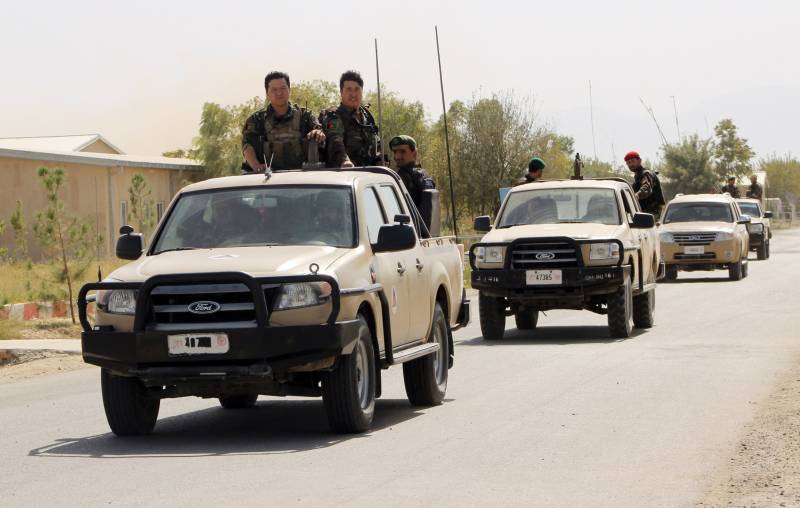
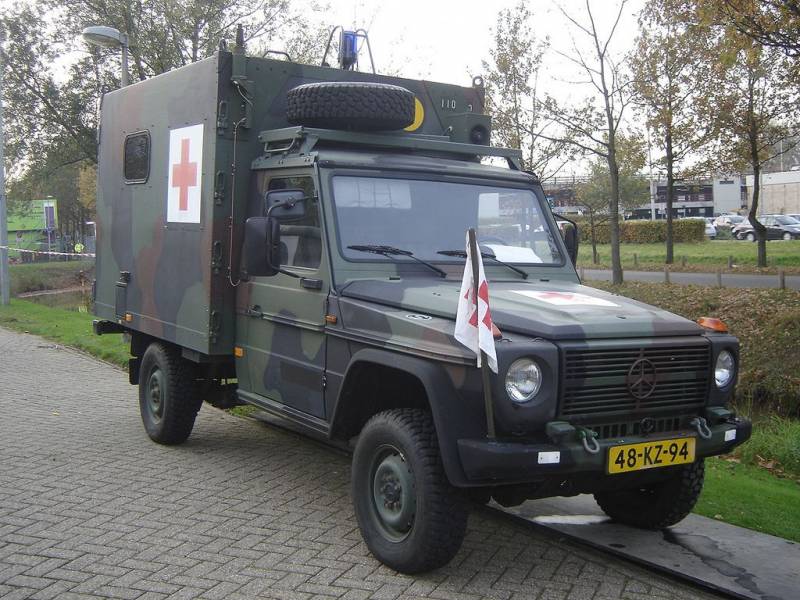
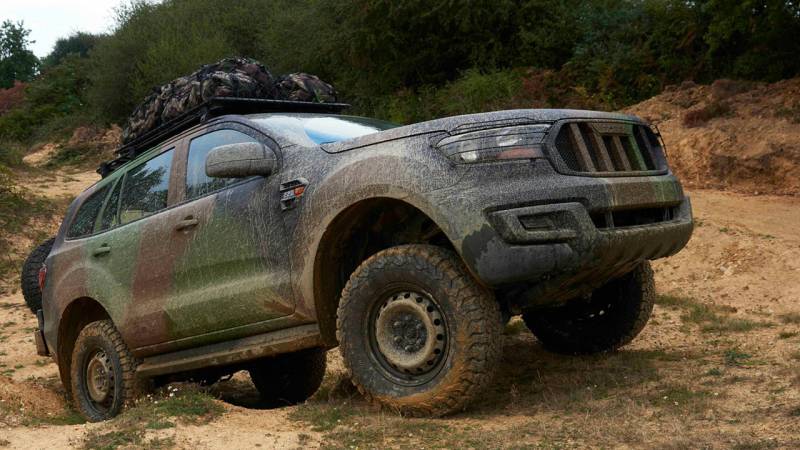
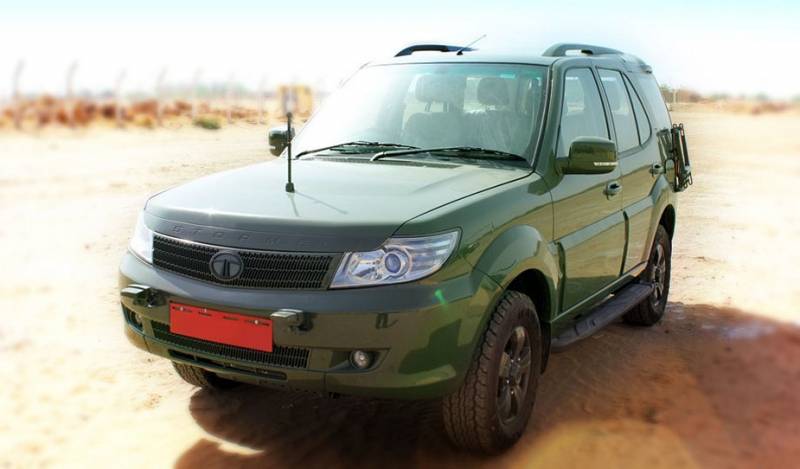
Information